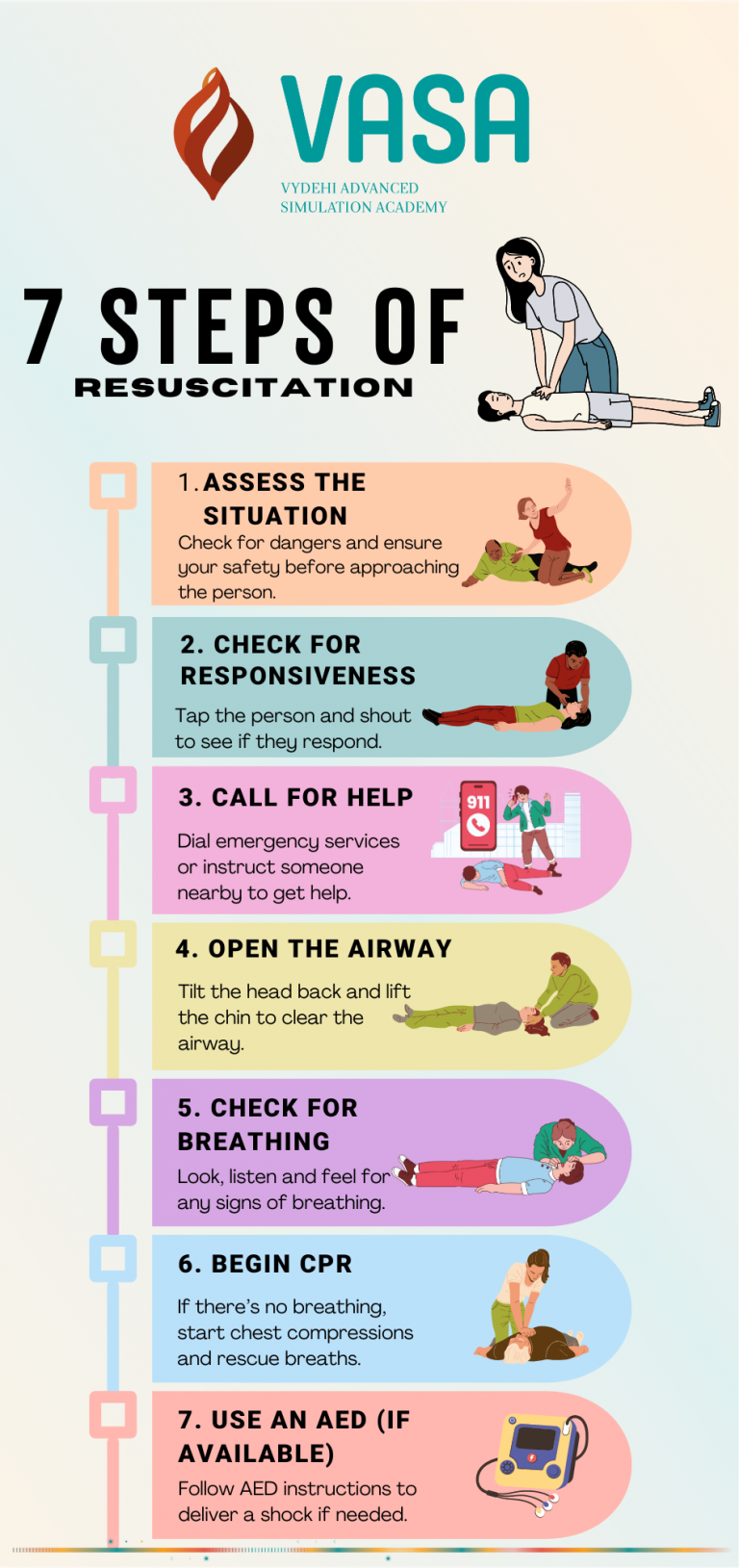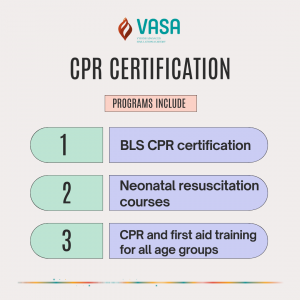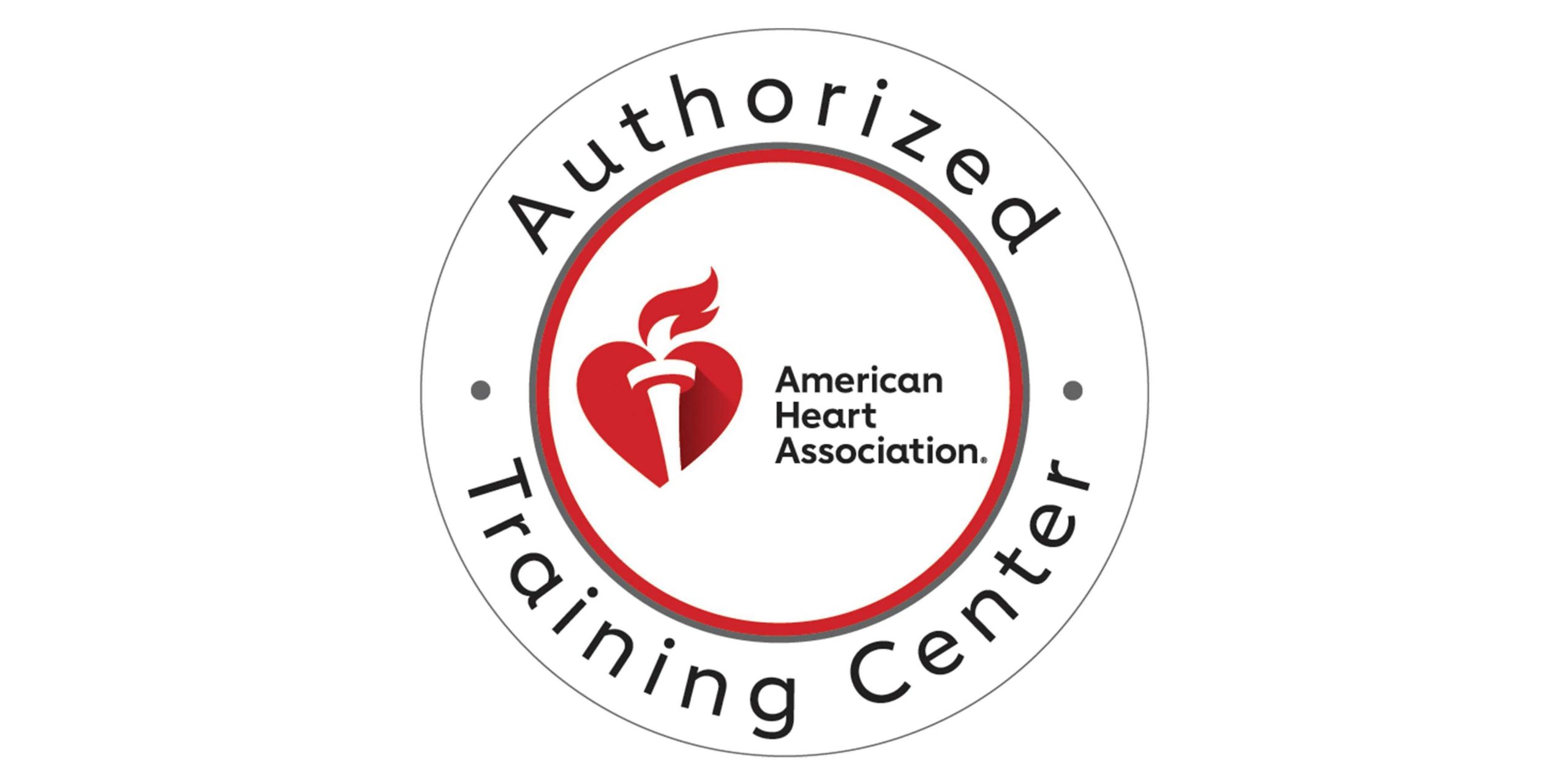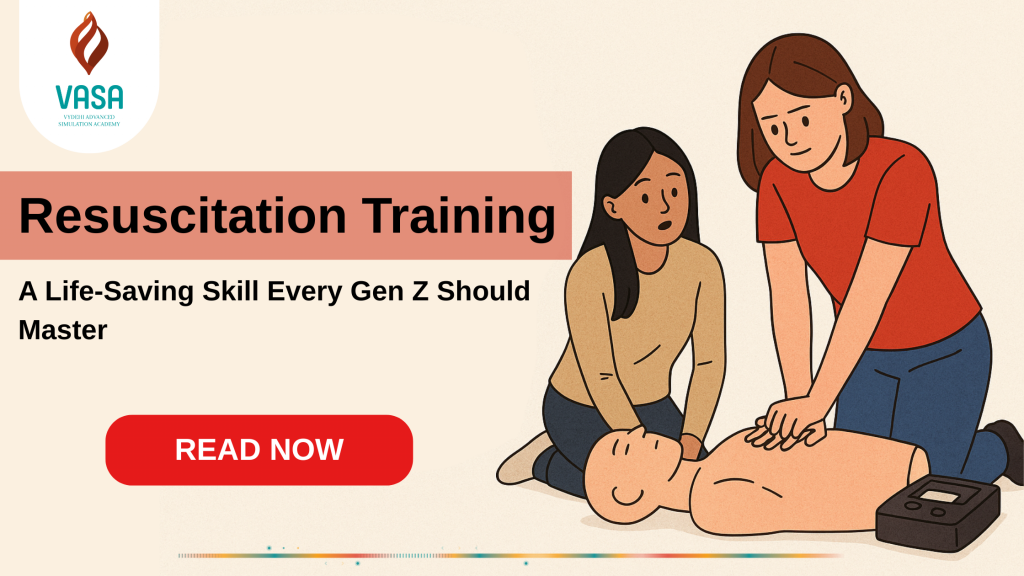Resuscitation Training: A Life-Saving Skill Every Gen Z Should Master
In a world where emergencies can happen anytime, having resuscitation training can make you a real-life hero. Whether it’s a sudden cardiac arrest, choking, or drowning, knowing how to perform CPR (Cardiopulmonary Resuscitation) can mean the difference ;between life and death. But how do you actually do it? And what are the essential steps to follow? Let’s dive into the ultimate guide to resuscitation training and why it’s a must-have skill for everyone, especially Gen Z.
What is Resuscitation Training?
Resuscitation training teaches you how to revive someone whose heart has stopped or who is unable to breathe. It covers essential life-saving techniques like CPR, first aid, BLS (Basic Life Support) and AED (Automated External Defibrillator) training.
With CPR and first aid training, you gain hands-on experience to confidently handle medical emergencies, making you an asset in any critical situation.

What Are the 7 Steps of Resuscitation?
Wondering what are the 7 steps of CPR? Follow this step-by-step guide:
- Assess the Situation – Check for dangers and ensure your safety before approaching the person.
- Check for Responsiveness – Tap the person and shout to see if they respond.
- Call for Help – Dial emergency services or instruct someone nearby to get help.
- Open the Airway – Tilt the head back and lift the chin to clear the airway.
- Check for Breathing – Look, listen and feel for any signs of breathing.
- Begin CPR – If there’s no breathing, start chest compressions and rescue breaths.
- Use an AED (if available) – Follow AED instructions to deliver a shock if needed.
These 7 steps of resuscitation form the foundation of effective life-saving techniques.
How to Perform CPR – Adult CPR Steps & Child CPR Steps
CPR can vary depending on whether you’re helping an adult, child, or infant. Here’s a quick breakdown:
Adult CPR Steps:
✅ Place the person on a firm surface.
✅ Position your hands – Put one hand on the center of the chest, with the other on top.
✅ Start chest compressions – Push hard and fast (at least 100-120 compressions per minute).
✅ Give rescue breaths – Pinch the nose, make a seal over their mouth and give two breaths after every 30 compressions.
✅ Continue until help arrives or the person starts breathing.
Child CPR Steps:
👶 For children (ages 1-8), use one hand for chest compressions.
👶 For infants (under 1 year), use two fingers instead of a full hand.
👶 Compression rate remains the same, but be gentler to avoid injury.
CPR training at a resuscitation training centre helps you practice these steps hands-on, making you confident in emergencies.
Neonatal Resuscitation: Saving Newborn Lives
Neonatal resuscitation training is crucial for saving newborns who struggle to breathe at birth. Neonatal resuscitation requires gentle CPR techniques, ventilation support and sometimes medication to stabilize the baby’s condition. Healthcare professionals undergo CPR certification in person to master these delicate procedures.
Why Should Gen Z Learn CPR and First Aid?
Gen Z is all about being proactive, socially responsible and ready to take action. Learning CPR, first aid and AED training makes you:
🔥 Prepared for real-life emergencies
🔥 A leader in crisis situations
🔥 More employable (CPR certification looks great on your resume!)
🔥 A responsible global citizen
Plus, attending CPR first aid classes can be a fun and interactive way to gain hands-on experience.
Where to Get CPR Certification?
If you’re looking for CPR first aid classes, find a resuscitation training centre near you. Many organizations offer CPR AED training and CPR certification in person, ensuring you get practical experience instead of just reading about it.
Some programs include:
✅ BLS CPR certification
✅ Neonatal resuscitation courses
✅ CPR and first aid training for all age groups
By taking CPR AED training, you’re equipping yourself with a skill that can save lives—literally.

Final Thoughts
So, what’s stopping you? Resuscitation training isn’t just for healthcare professionals—it’s for everyone, including YOU! Whether it’s an adult, child, or newborn in distress, knowing the CPR procedure could make you a lifesaver in an emergency.







